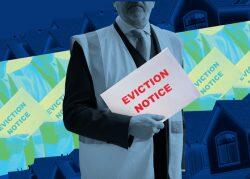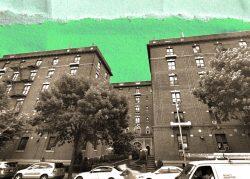Right in time for the holiday season, Public Advocate Jumaane Williams’ list of naughty landlords went live this week, just as tenant groups released a round-up of the city’s “worst evictors.”
But are the firms that got fingered really the worst?
Over the years, the public advocate’s office has dropped that word and renamed its tracker the “landlord watchlist,” as well as changed its methodology in an effort to single out sleaze rather than size. But as The Real Deal found, the model remains flawed.
The “worst evictors” list, for its part, is based on volume — punishing larger portfolio owners — and on eviction filings, not actual evictions.
The public advocate’s list is populated largely by lower-profile owners. The evictor list, as might be expected given its methodology, includes several big-name landlords. No. 1 is the LeFrak Organization.
The city’s second-largest rental landlord, headed by billionaire Richard LeFrak, sued 2,627 households for eviction between March 2020 and September 2021, close to a quarter of its 11,000-plus households, according to the list.
The majority were at LeFrak City, a mammoth development in Corona, Queens, with over 5,000 units. Some 1,382 families there were sued for eviction during the pandemic, the list said.
A spokesperson for LeFrak said the majority stem from nonpayments before the pandemic and that this year only two evictions had been conducted, both with court approval.
The spokesperson added that LeFrak has followed all emergency guidance and laws throughout the pandemic, and noted that the state has not closed the courts or prohibited nonpayment actions.
Evictions have been suspended statewide since the pandemic descended upon New York. Many landlords have put off filings during the period, opting to work out payment plans with tenants rather than add to a backlog of cases.
The moratorium, however, requires tenants to submit a hardship declaration form in order to use the pandemic as a defense against eviction. As a result, nonpayment or holdover cases in which the tenant did not submit the declaration or that predated the pandemic have been able to go forward.
LeFrak did not make the public advocate’s list, which is based on housing violations.
Read more


For its 2021 list, the public advocate’s office analyzed buildings based on the average number of hazardous Class B and immediately hazardous Class C violations from December 2020 to November 2021. It then weighted them — Class C violations count for 1.5 — and divided by the number of units in a building to generate a score.
To make the watchlist, a building with fewer than 35 units must have a score of 3 or more, which roughly means at least three weighted violations per unit. Larger buildings need a minimum score of 2. Landlords are then ranked by the average score of buildings that met the Watchlist’s criteria.
The rub is that landlords get no credit for owning buildings with few violations. Put another way, a landlord can own many buildings that are not counted yet he can make the list based on a handful that are.
For example, David Schorr, who topped the public advocate’s rankings, had 17 buildings make the list with an average of 1,442 open violations. Yet he has 102 properties, according to a tool developed by JustFix, which helped compile the Worst Evictors list. That means 87 buildings that might have improved his ranking went uncounted.
It might even be inaccurate to call Schorr a landlord. A spokesperson for Fairstead, where Schorr is vice president of operations, said Schorr does not own or manage any properties for the development firm. Schorr was previously a director at Sugar Hill Capital Partners, the firm associated with many of the buildings for which the Watchlist considers Schorr an owner.
To create their Worst Evictors List, JustFix, the tenant advocacy group Right to Counsel NYC Coalition and the Anti-Eviction Eviction Mapping Project tapped building-level data from the Office of Court Administration on cases filed between March 2020 and September 2021.
Of the 20 shamed landlords, half had sued less than 10 percent of their tenants.
Outliers included Alan Sullivan of the Dematteis Organization and Demetrios Moragianis of Proto Property Services, who filed evictions against more than a quarter of their tenants. Neither firm responded to a request for comment.
The real estate industry has criticized the list for failing to represent the number of actual evictions, which historically is less than 10 percent of the number of petitions filed. Cases often resolve via court-mandated payment plans or emergency funding from the city, known as one-shots.
A few landlords secured spots on both the watchlist and the evictor list: Jonathan Wiener, president of Chestnut Holdings, one of the largest owners in the Bronx, and Steven Finkelstein, principal of Finkelstein Timberger East Real Estate.
Both owners sued 7 percent or less of their tenants for eviction, according to the evictor list. Wiener has 88 units with violations, about 1 percent of his total holdings. His firm was sued by the attorney general last year for lead paint in 134 buildings.
Finkelstein houses more than 4,000 families, yet its violations were all in one, 54-unit building. Neither firm responded to a request for comment.
